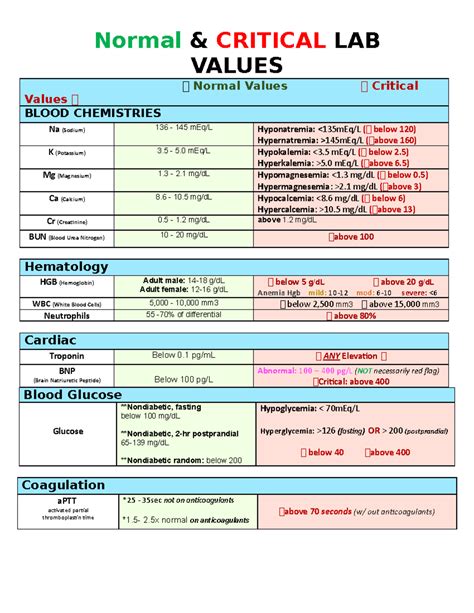Intro
Learn about the Albumin to Creatinine Ratio, a key urine test measuring kidney function, proteinuria, and microalbuminuria, helping diagnose nephrotic syndrome and kidney disease.
The albumin to creatinine ratio, also known as the urine albumin-to-creatinine ratio (UACR), is a widely used diagnostic tool in the field of nephrology. It is a crucial test for detecting kidney damage, particularly in patients with diabetes, hypertension, and other kidney diseases. The ratio helps healthcare professionals to identify early signs of kidney damage, monitor disease progression, and develop effective treatment plans. In this article, we will delve into the world of albumin to creatinine ratio, exploring its significance, working mechanisms, and practical applications.
The importance of the albumin to creatinine ratio cannot be overstated. Kidney disease is a growing health concern worldwide, affecting millions of people each year. Early detection and intervention are essential to prevent further kidney damage, reduce the risk of complications, and improve patient outcomes. The UACR test provides a simple, non-invasive, and cost-effective way to assess kidney function, making it an invaluable tool for healthcare professionals. By understanding the albumin to creatinine ratio, patients can take proactive steps to protect their kidney health and prevent long-term damage.
The albumin to creatinine ratio is calculated by measuring the amount of albumin (a protein) and creatinine (a waste product) in a patient's urine sample. The test is typically performed on a random urine sample, and the results are expressed as a ratio of milligrams of albumin per gram of creatinine (mg/g). The ratio provides a more accurate assessment of kidney function than measuring albumin or creatinine levels alone. A high UACR indicates kidney damage or disease, while a low ratio suggests normal kidney function.
What is Albumin to Creatinine Ratio?

How is Albumin to Creatinine Ratio Calculated?
The albumin to creatinine ratio is calculated by dividing the amount of albumin in the urine (in milligrams) by the amount of creatinine in the urine (in grams). The resulting ratio is expressed as milligrams of albumin per gram of creatinine (mg/g). The calculation is typically performed using a urine dipstick or a laboratory test.Normal and Abnormal Values

Interpretation of Results
The interpretation of the albumin to creatinine ratio results depends on the individual patient's medical history, symptoms, and other laboratory test results. A high UACR may indicate kidney damage or disease, while a low ratio suggests normal kidney function. Healthcare professionals may use the UACR results to:- Diagnose kidney disease or damage
- Monitor disease progression
- Develop treatment plans
- Assess the effectiveness of treatment
Benefits of Albumin to Creatinine Ratio

- Early detection of kidney damage or disease
- Non-invasive and cost-effective testing
- Simple and quick test results
- Accurate assessment of kidney function
- Monitoring of disease progression and treatment effectiveness
Limitations of Albumin to Creatinine Ratio
While the albumin to creatinine ratio is a valuable diagnostic tool, it has some limitations. These include:- Variability in test results due to factors such as urine concentration and laboratory methods
- Limited sensitivity and specificity for detecting certain types of kidney disease
- Need for repeated testing to confirm results and monitor disease progression
Practical Applications of Albumin to Creatinine Ratio

- Diagnosing and monitoring kidney disease in patients with diabetes, hypertension, and other kidney diseases
- Assessing the effectiveness of treatment plans and making adjustments as needed
- Identifying patients at high risk of kidney disease and implementing preventive measures
- Monitoring kidney function in patients with kidney transplants or other kidney diseases
Case Studies and Examples
The albumin to creatinine ratio has been used in various clinical settings to diagnose and monitor kidney disease. For example, a study published in the New England Journal of Medicine found that the UACR was a strong predictor of kidney disease progression in patients with type 2 diabetes. Another study published in the Journal of the American Society of Nephrology found that the UACR was effective in identifying patients at high risk of kidney disease and implementing preventive measures.Future Directions and Research

- Developing more sensitive and specific tests for detecting kidney disease
- Investigating the role of the UACR in predicting cardiovascular disease and other complications
- Exploring the use of the UACR in monitoring kidney function in patients with kidney transplants or other kidney diseases
Conclusion and Recommendations
In conclusion, the albumin to creatinine ratio is a valuable diagnostic tool for detecting kidney damage and disease. Healthcare professionals should use the UACR in conjunction with other laboratory tests and clinical evaluations to diagnose and monitor kidney disease. Patients should be aware of the importance of the UACR and take proactive steps to protect their kidney health. Further research is needed to develop more sensitive and specific tests and to explore the role of the UACR in predicting cardiovascular disease and other complications.What is the normal range for the albumin to creatinine ratio?
+The normal range for the albumin to creatinine ratio is less than 30 mg/g.
What does a high albumin to creatinine ratio indicate?
+A high albumin to creatinine ratio indicates kidney damage or disease.
How is the albumin to creatinine ratio calculated?
+The albumin to creatinine ratio is calculated by dividing the amount of albumin in the urine (in milligrams) by the amount of creatinine in the urine (in grams).
We hope this article has provided you with a comprehensive understanding of the albumin to creatinine ratio and its significance in detecting kidney damage and disease. If you have any questions or concerns, please do not hesitate to comment below. Share this article with your friends and family to raise awareness about the importance of kidney health. Take proactive steps to protect your kidney health by maintaining a healthy lifestyle, getting regular check-ups, and staying informed about the latest developments in kidney disease diagnosis and treatment.
